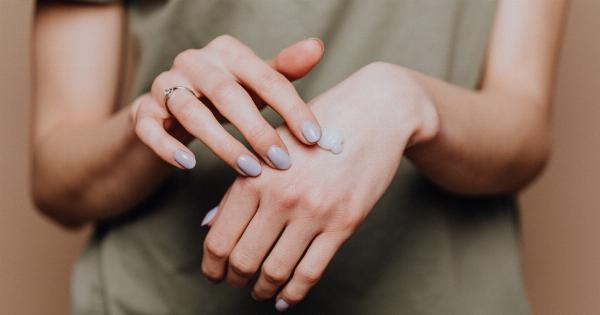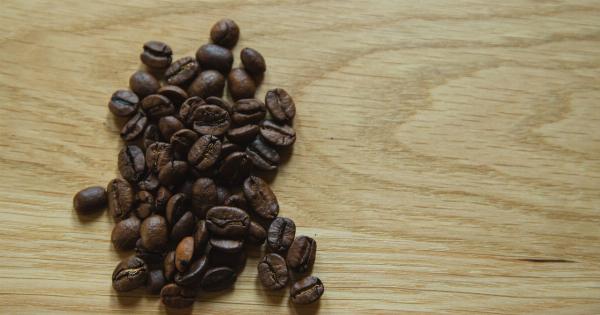Cellulite is a common condition that affects many individuals, particularly women. It is characterized by the appearance of dimpled, cottage cheese-like skin, mainly in areas such as the thighs, buttocks, and abdomen.
While cellulite is not a serious medical condition, it can often be a source of self-consciousness and affect body image. Fortunately, there are several proven solutions available to combat cellulite and improve the appearance of the skin. In this article, we will explore these solutions and discuss their effectiveness.
1. Dry Brushing
Dry brushing is a technique that involves gently brushing the skin with a dry, natural bristle brush. This method helps to stimulate blood flow and exfoliate the skin, reducing the appearance of cellulite.
Dry brushing also aids in lymphatic drainage, which can help eliminate toxins from the body and reduce fluid retention.
Dry brushing should be done on dry skin before bathing or showering. Begin at the feet and brush in upward strokes towards the heart, focusing on cellulite-prone areas. It is important to be gentle and avoid any sensitive or broken skin areas.
Aim for dry brushing 2-3 times a week for best results.
2. Coffee Scrub
Coffee scrubs have gained popularity as an effective home remedy for reducing the appearance of cellulite. The caffeine in coffee stimulates blood flow and helps to tighten and tone the skin.
Coffee also acts as a natural exfoliant, removing dead skin cells and promoting new cell growth.
To create a coffee scrub at home, mix coffee grounds with a carrier oil such as coconut oil or olive oil. Apply the scrub to damp skin and massage it in circular motions for a few minutes. Rinse off with warm water.
For added benefits, you can wrap the treated area with plastic wrap for 10-15 minutes before rinsing. Repeat this process 2-3 times a week.
3. Massage Therapy
Regular massage therapy can effectively reduce the appearance of cellulite. Massaging the affected areas helps to increase blood circulation, break up fatty deposits, and stimulate lymphatic drainage.
Professional massages often incorporate techniques such as deep tissue massage, lymphatic drainage, and myofascial release to target cellulite.
If professional massages are not feasible, you can also try self-massage techniques at home. Use your fingers, knuckles, or a massage tool to target cellulite-prone areas. Apply gentle pressure and massage the area in circular or sweeping motions.
Regular massages, whether professional or self-administered, can provide visible improvements in cellulite reduction.
4. Exercise
Regular exercise is crucial in reducing cellulite and improving overall body composition. Engaging in physical activity helps burn excess fat, tone muscles, and improve circulation.
Incorporating both cardiovascular exercises and strength training into your routine can yield significant results.
Cardiovascular exercises such as running, swimming, or cycling help burn calories and increase heart rate. Aim for at least 30 minutes of cardiovascular exercise, 3-4 times a week.
Strength training exercises, focusing on cellulite-prone areas, help build muscles and improve skin elasticity. Incorporate exercises like squats, lunges, and leg lifts into your routine to target cellulite specifically.
5. Healthy Diet
A balanced and healthy diet plays a vital role in reducing cellulite. Avoiding processed foods, excessive salt, and sugary snacks can help prevent fluid retention and the formation of cellulite.
Opt for nutrient-dense foods such as fruits, vegetables, lean proteins, and whole grains.
Hydration is also essential for maintaining healthy skin. Drinking an adequate amount of water not only helps flush out toxins but also keeps the skin hydrated and supple. Aim for at least 8 glasses of water per day to stay adequately hydrated.
6. Topical Creams and Serums
There are several topical creams and serums available in the market that claim to reduce cellulite.
These products often contain ingredients such as caffeine, retinol, and antioxidants that help improve blood circulation, boost collagen production, and promote skin firmness.
When choosing a cellulite cream, look for products with clinically proven ingredients and positive customer reviews. Apply the cream or serum to clean, dry skin as directed by the manufacturer.
For optimal results, combine the use of topical creams with other cellulite-fighting methods such as exercise and a healthy diet.
7. Laser Treatment
Laser treatment, such as laser therapy or radiofrequency treatments, can be an effective option for reducing cellulite.
These treatments work by targeting the underlying fat deposits and stimulating collagen production, resulting in improved skin texture and reduced cellulite.
Laser treatments for cellulite are usually performed in a professional setting and typically require multiple sessions for noticeable results.
It is essential to consult with a qualified dermatologist or aesthetician to determine the most suitable laser treatment for your specific needs.
8. Body Wraps
Body wraps can provide temporary improvements in the appearance of cellulite. These wraps typically involve applying a mixture of clay, algae, or other natural ingredients to the skin, which is then wrapped in plastic or bandages.
Body wraps help promote detoxification, tighten the skin temporarily, and improve circulation.
While body wraps may provide immediate results, the effects are temporary and last only for a short duration. It is important to note that body wraps should not be considered a long-term solution for cellulite reduction.
9. Mesotherapy
Mesotherapy is a minimally invasive procedure that involves injecting a combination of medications, vitamins, and enzymes into the middle layer of the skin.
This treatment aims to break down fat deposits, improve blood circulation, and promote collagen production.
Mesotherapy is typically performed by a qualified medical professional and may require multiple sessions for optimal results.
It is crucial to consult with a reputable provider and discuss any potential risks or side effects before undergoing this procedure.
10. Surgical Options
In severe cases of cellulite that do not respond to non-invasive treatments, surgical options such as liposuction or cellulite subcision may be considered.
Liposuction involves removing excess fat deposits using a suction technique, while cellulite subcision involves cutting the fibrous bands that cause dimpling.
These surgical procedures should only be considered after exploring all non-invasive options and consulting with a qualified plastic surgeon.
It is important to understand the potential risks, recovery process, and realistic expectations associated with these procedures.































